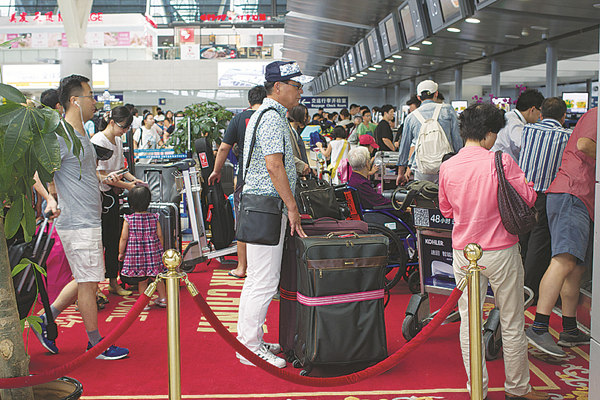City's transport capacity on the rise, set to grow further


Shanghai will be enhancing its transportation infrastructure so as to develop itself into a hub for aviation, maritime and rail transport, according to the 2035 master plan.
The city is already the nation's top aviation hub, having handled about 112 million passenger trips at its two airports, Shanghai Hongqiao International Airport and Shanghai Pudong International Airport, last year.
The city is also home to 110 aviation companies operating flights to 297 destinations in 47 countries and regions. Authorities are now aiming to turn the city into an aviation gateway for the Asia Pacific region by 2035.
According to the Shanghai Airport Authority, the city is presently the third-largest aviation hub in the world after Hong Kong and Memphis, boasting a cargo and mail throughput above 4 million tons. Last year, the two Shanghai airports reported cargo and mail throughput of 4.24 million tons.
The total number of overseas passengers who passed through Shanghai's two airports accounted for nearly 28 percent of the national total in 2017, according to the Shanghai Transport Commission.
At the 29th International Business Leaders' Advisory Council held in September, Shanghai Mayor Ying Yong said that the city is aiming to handle 45 million TEUs (20-foot equivalent units) of cargo by 2040. The aim for the airports, he added, would be to handle more than 180 million passengers, more than 40 percent of which would be international travelers.
In 2017, people entered and exited China more than 43.7 million times through Shanghai, up from 42.4 million in 2016 and 37.5 million in 2015.
The Shanghai General Station of Immigration Inspection attributed this growth to the implementation of new policies, including the six-day transit visa for nationals from 53 countries and regions which was unveiled in January 2016, as well as the government's decision in October 2016 to allow tourists on foreign cruise tours to stay in the city for 15 days without a visa.
Shanghai Port's annual capacity increased to more than 40 million TEUs after the world's largest automated port at Shanghai's Yangshan Port went into operation in December. Yan Jun, president of the Shanghai International Port Group (SIPG), said that the opening of the new port signaled a new era of development for the city.
Shanghai's Wusongkou Cruise Port, which is currently Asia's busiest cruise port and the world's fourth largest, expects to double its passenger volume to 5 million passenger trips by 2023, according to Wang Younong, chairman of Shanghai Wusongkou International Cruise Terminal Development.
- Tasting the world in Shanghai
- Yunnan official dismissed for demanding athlete's prize money
- Unmanned transport plane makes maiden flight in Shaanxi
- Probe finds cardiac condition the cause of Henan schoolboy's death
- 14 injured in off-road racing accident in East China
- China to beef up personal data protection in internet applications



































